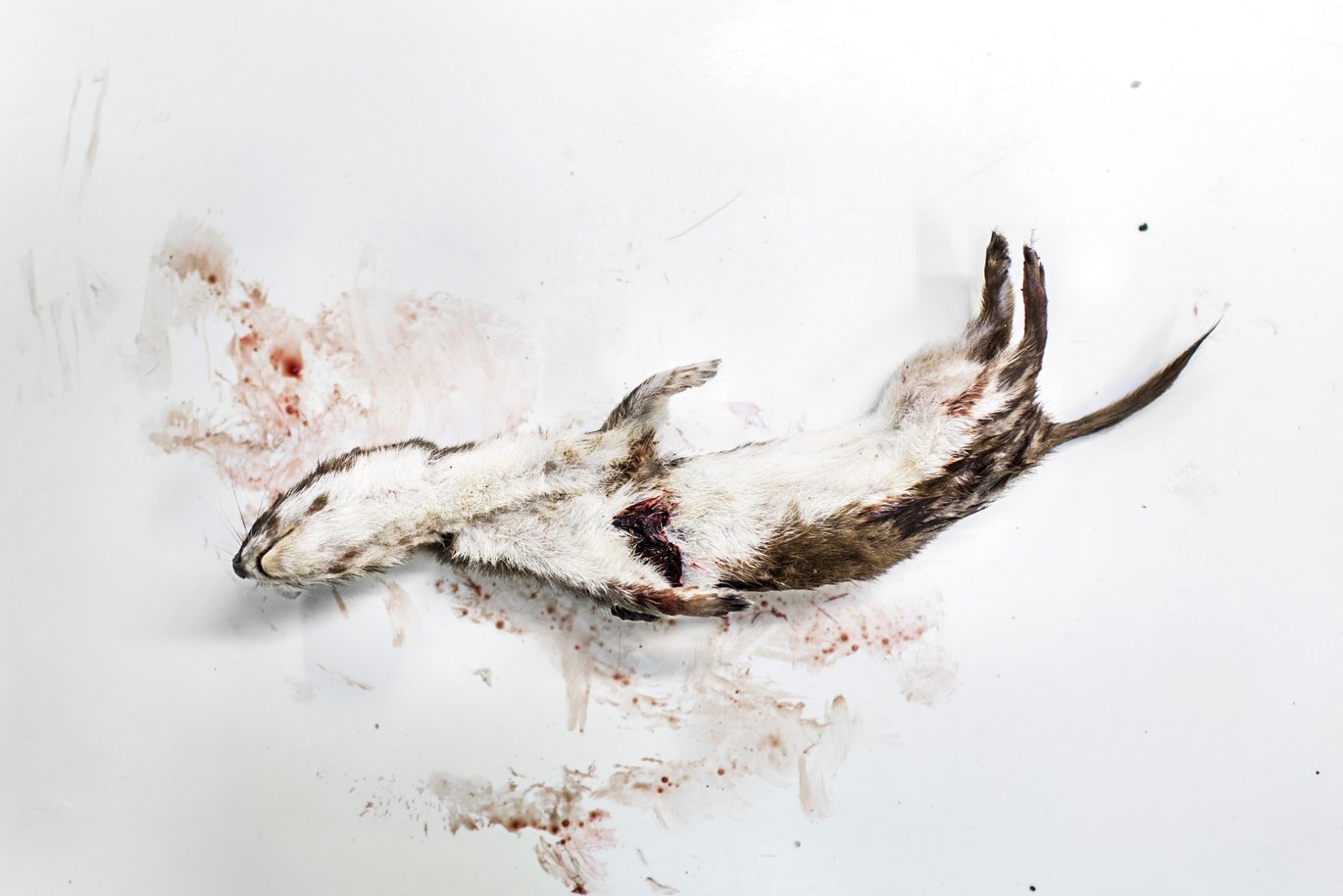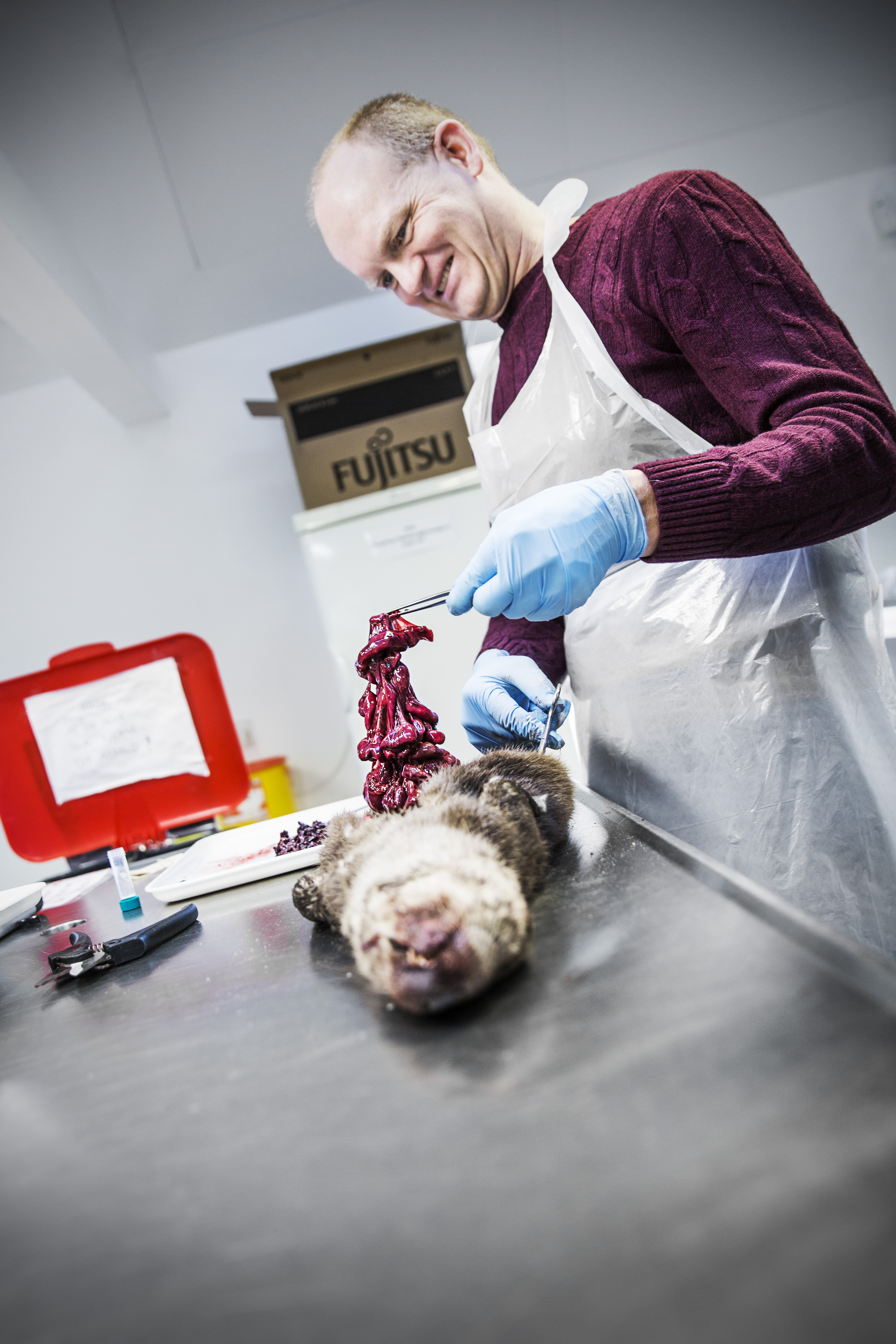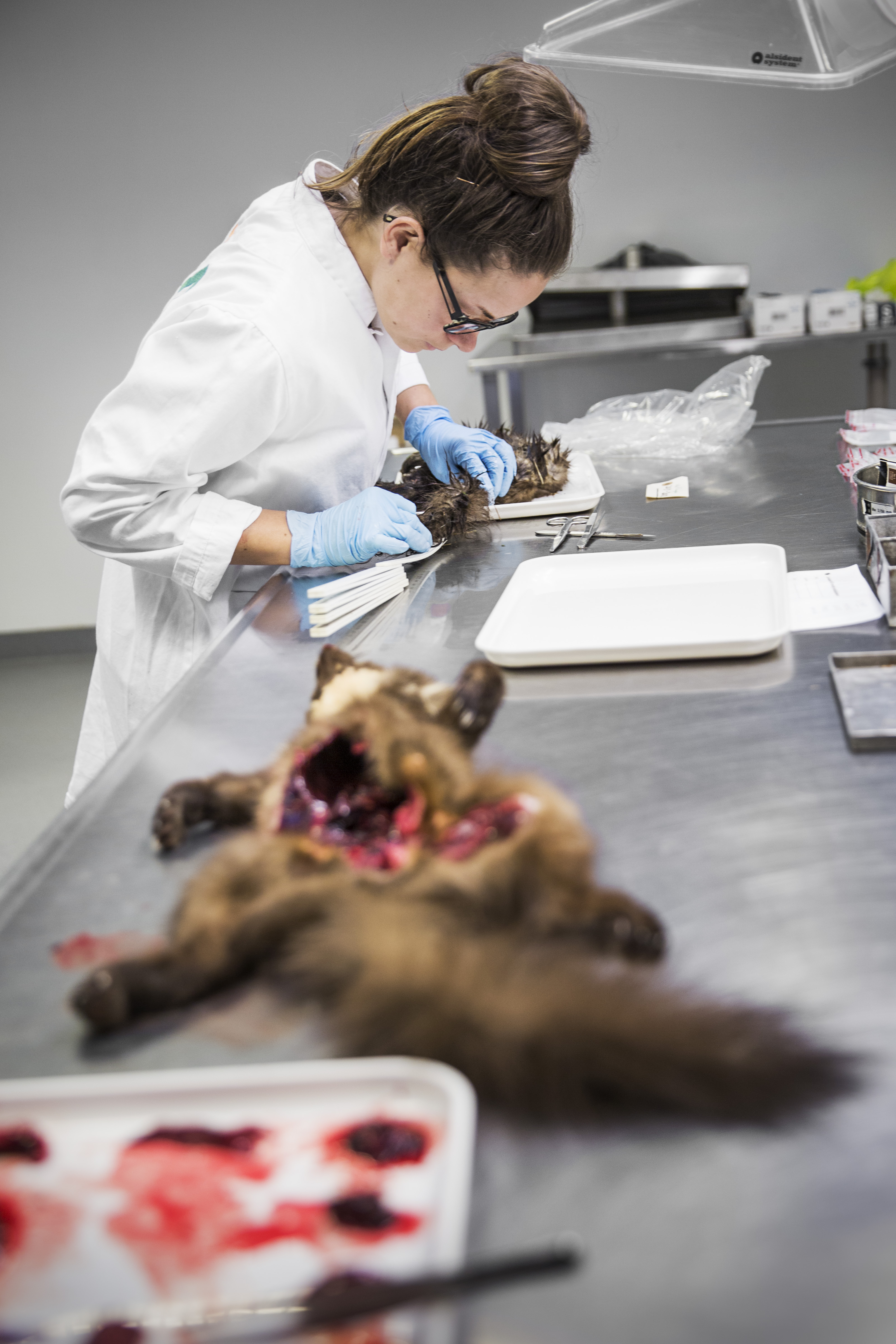Just watch out for those anal glands!
No matter what you might collect, there is no way you can match Morten Elmeros. His collection is possibly the largest in Europe. And it is a bloody one. The crown jewels in the collection once belonged to a genuine celebrity - until Morten Elmeros and his colleagues came along with their scalpels and plastic bags.




Do you just happen to need 25 livers from a marten, a dozen spleen from a stoat or an otter’s stomach? Then biologist and senior adviser Morten Elmeros from the Department of Bioscience in Kalø is the man to call.
Which is what Omnibus did and now we are rolling into the car park at Kalø Høvedgaard to meet him.
We have arrived at a beautiful thatched building covered by a layer of snow on this foggy January morning, making the courtyard and the three wings of the building from the 1700s even more idyllic.
On the other hand, we’re not here to enjoy “the nature and culture experiences” of the area as advertised by the local tourist website. In fact, we’re here to see animals cut open and look at their intestines.
Walk-in freezer
Morten Elmeros show us into the laboratory, a black wooden building, and opens a heavy steel door into a densely packed cold store: "the walk-in freezer" as he calls it.
This is where he stores his collection of intestines from several hundred stoats, ferrets, otters, martens and badgers, which are just some of the animals that have given their lives to science (without giving their consent).
In biology jargon the collection is a "tissue bank".
"A bank like this is worth its weight in gold," says Morten Elmeros with barely concealed pride as he fishes up a plastic bag with a bloody lump of meat from one of the many polystyrene boxes stacked along the walls. He continues:
"The larger the collection, the better. You can’t collect everything of course, but we want to at least fill the freezer up." This approach has made the collection of tissue samples one of the largest in Europe.
Morten Elmeros has put the lump of meat back in its box and now has a paper envelope in his hand. Two black wings stick out.
"It's not only my freezer. I share it with my colleagues," he explains.
This means the freezer also contains soil samples, fauna samples and even a great deal of bird wings that have been collected and registered by his colleague Thomas Kjær Christensen for use in hunting statistics.
"I think this is a common scoter," says Morten Elmeros, before admitting that birds are not his area of expertise.
First dead animal
But he is an expert in forest carnivores. Morten Elmeros' collection has taken a lot of work and it also has to be maintained.
He has therefore earmarked four working days together with his student assistants Louise Nørgaard and Dorthe Mikkelsen, who are both Master’s thesis students from Aalborg University, to perform autopsies on the pile of dead animals that has built up in the freezer.
The majority of animals have been killed on the roads and then delivered by the Danish Nature Agency or private individuals. But some of them also come from conservators and from the Zoological Museum.
The first animals under the knife on the large metal table are a white breasted marten and a pine marten. Despite the cold environment and the bright lightening they still look quite cute lying there peacefully.
Were it not for the sharp teeth and claws, they could even look at home among the stuffed animals in a funfair tombola.
But only until Morten Elmeros and Louise Nørgaard open up the stomachs with a steady hand and almost synchronous movements of scissors and tweezers, before beginning to fish a heart and other bloody intestines out.
Bingo!
While we momentarily have to look the other way, the three of them appear completely unaffected, despite having spent the last three days having cutting animals open.
Everything is systematised. Morten Elmeros and Louise Nørgaard measure and weigh, while Dorthe Mikkelsen notes length and weight in a folder that is not stained with coffee, but rather with blood spatter.
"I’ve got a set," says Morten Elmeros suddenly as if he had won at bingo.
But here a full set means that he has removed the following from his white breasted marten: testicles, liver, gall bladder, spleen, heart, lungs, kidneys, intestines, stomach and a piece of muscle from the inner thigh, before arranging it all neatly on the metal table.
Unknown research potential
But why is it that Morten Elmeros and his student assistants so carefully remove and archive intestines from dead animals?
"There is unknown research potential in this material. If you’re beginning a research project, you don't just go out and kill a hundred otters. You’re not allowed to. We collect tissue samples from animals that are already dead. So you might just as well use them for something sensible," he says.
The samples in the tissue bank have been used for a some major research projects involving the Danish Nature Agency and the Danish Environmental Protection Agency, which provided an overview of the incidence of mouse and rat poison in nature. Here the research team examined hundreds of livers from ferrets and martens.
"Offhand you shouldn’t be able to find poison in any of them, but we were found it in more than 90 per cent of the samples," he says.
International interest
It is not only the Danish Nature Agency and the Danish Environmental Protection Agency who benefit from the tissue bank in Kalø.
Morten Elmeros has supplied 75 muscle samples from ferrets, weasels and martens to PhD students in Lisbon, 50 otter gall bladders to Cardiff University, and 30 muscle samples from badgers to a researcher in Luxembourg.
In other words, everyone is welcome to contact us, says Morten Elmeros.
"As long as you have a good project and the funds to carry it out."
The biologist therefore does what he can to increase awareness of the tissue bank when he travels around the world to conferences, so that it can maximise its scientific return. This also means he can defend prioritising the resources the tissue bank uses when dealing with the department management team.
"It’s also a bit selfish. If I supply 50 samples to a project abroad or at home, I will also end up as co-author on some publications. We’re assessed according to how many publications we are part of. So that’s also a way of selling it to the department," he says.
Crown jewels from a Northern Jutland celebrity
Morten Elmeros and his colleagues received the crown jewels in the collection back in 2012 when a certain wolf from Thy grabbed the limelight as the first wolf in Denmark observed outside of captivity in 199 years. Morten Elmeros took part in the autopsy of the wolf and can now proudly display both liver, kidney and a piece of muscle from the furry Northern Jutland celebrity.
But that is not all. The cold treasure trove also contains faeces found in Denmark which in all probability comes from relatives of the Thy celebrity.
An animal diet analysis of the wolf faeces will show what the owners of the droppings had sunk their teeth into. And even though the results will first be published in the summer, Morten Elmeros can reveal some of the information already now.
"We can reveal that they haven’t eaten any grandmothers or young children," he says.
Smelly weasels!
A new furry animal has been placed on the metal table in the laboratory.
Morten Elmeros weighs the largest animal so far today, an otter weighing in at a little over three kilos.
Louise Nørgaard, on the other hand, is working on the smallest of the animals, weighing in at just 54 grams, a weasel.
To find out whether it’s male or female, Louise Nørgaard must feel whether there are testicles or not. And that’s when things go wrong.
Suddenly there is a very bad smell which can best be described as smelling like rotten or far too old curry (if curry can rot).
Louise Nørgaard has accidentally squeezed in the wrong place and activated the weasel’s anal glands, which the animal uses to mark its territory.
"That’s something you really try to avoid doing," she says dryly while trying to suppress a wry smile.
Okay, we’ll try to remember that next time we have a defrosted weasel in front of us.
Translated by Peter Lambourne

